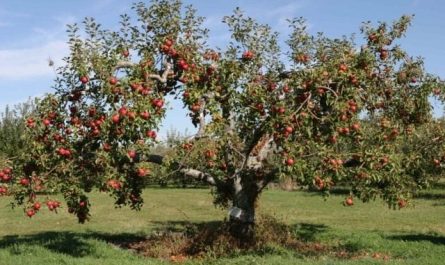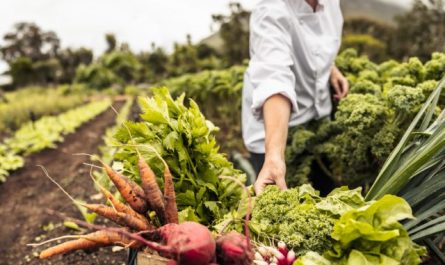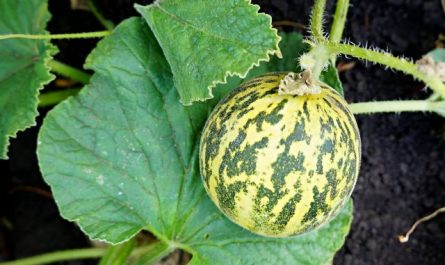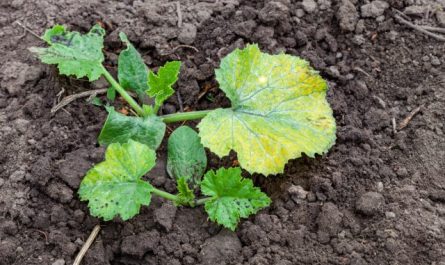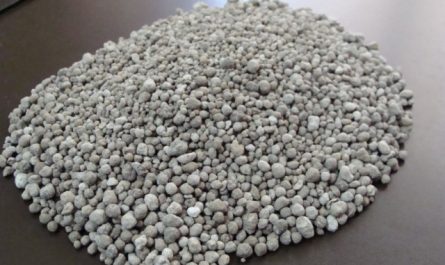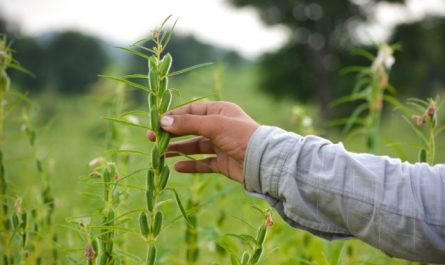Herbes de Provence is the name of a mixture of Provencal Mediterranean kitchen herbs that can be used to enhance the smell and taste of various dishes. Provence is a province in the south of France where herbs are traditionally grown, hence the name. The composition of the aromatic mixture of Provencal herbs can be very diverse, but the basic herbs are usually: thyme, marjoram, rosemary, basil and savory. How to grow Provencal herbs in the garden and on the windowsill, and how to use them, read in our article.

Peculiarities of Growing Provencal Herbs
If you live in the south or in the middle zone of the country, forget about dry mixtures prepared by someone else. You can make a mixture of Provencal herbs yourself from your own fresh plants grown in your garden.
Residents of northern regions can successfully grow herbs on their windowsill.
Mediterranean herbs are planted in dry, lime-rich soil in a well-lit area or in a well-drained ceramic pot. Place
a decent layer of gravel or crushed stone and place the plants against the south wall, hiding them from the cold wind.
Use as little or no fertilizer as possible. Always prune entire branches to encourage new growth from below and keep plants bushy.
Let’s take a closer look at the features of growing the basic plants from the composition of Provencal herbs.
Rosemary
Rosemary common, or medicinal rosemary (Rosmarinus officinalis) — an evergreen shrub with resinous, needle-like leaves and a strong odor. It blooms in summer with small violet-blue flowers.

The plant loves the sun. The soil should not be too rich in nutrients and not acidic. If necessary, add a little lime. Use well-drained soil containing at least 50 percent sand.
Rosemary planted in a garden bed will repel all pests and help get rid of flies and mosquitoes.
In ornamental gardens it is used as a border plant.
Sorts Hill Hardy и Arp can withstand temperatures as low as -20 degrees Celsius and are among the hardiest varieties of rosemary.
Rosemary leaves contain many essential oils, especially during flowering. They are active antioxidants and have antibacterial properties. Rosemary improves blood circulation and heart function, relieves joint pain, and strengthens memory. It contains vitamins A, B6, and C, magnesium, potassium, calcium, and iron.
Its taste is mild. The leaves are used in weight loss products. They disinfect and help preserve food. They perfectly complement the taste of meat dishes, go well with vegetables, soups, salads.
Fresh rosemary can be frozen and stored for up to six months, or dried and stored in a sealed jar as a delicious, aromatic spice.
Thyme
Thyme (Thymus vulgaris) — a small, highly branched herbaceous plant from the Lamiaceae family with aromatic, oval-shaped leaves. The color of the leaves is gray-green.

Thyme (or savory) is planted in gardens as a ground cover, along paths, on alpine hills. This plant attracts bees and repels mosquitoes.
Common thyme is especially suitable for use in the kitchen. Fleur Verifiedcale.
Most fragrant (“Orange balm”) – orange thyme for making herbal tea.
For a decorative garden, common thyme is planted. Silver PostIts leaves with white edges look very impressive.
The soil for growing thyme should be well-drained. For good growth, the plant needs to be trimmed annually, but not more than 5 cm.
Thyme is easy to sow, but it can also be propagated by layering. If you press a few branches into the ground without tearing them away from the main plant, then in less than a month they will have roots.
Thyme is used not only as a spice, but also for medicinal purposes. It contains vitamins A, C, iron, copper, manganese, essential oils, and is a good antioxidant. The thymol it contains helps with colds.
As a spice, thyme has a fresh, pleasant taste with the aroma of cloves and mint. It is often used in the preparation of sauces, liqueurs and other dishes.
Thyme is best collected in the morning and preferably before it begins to bloom. It should be taken into account that the taste of fresh thyme is twice as strong as dried.
Basil
Basil common, or sweet basil (Ocimum Basilicum) is a small herbaceous plant with a highly branched stem, native to tropical countries. The leaves are green, oval-shaped, with a strong smell. It blooms in summer with small white flowers.

Basil is grown in a place protected from the hot midday sun. The soil should be rich in nutrients using organic fertilizers. It requires sufficient moisture and good drainage.
It is believed that basil planted next to vegetables will protect them from all types of parasites. And by placing pots with the plant in the house, you will get rid of flies and mosquitoes.
In a moderate climate, the easiest way to grow basil is through seedlings. Basil is planted in open ground after the frosts have disappeared; for its growth, a temperature of at least 15 degrees is necessary. For winter storage, basil can be dried, frozen, preserved, or made into a paste.
This plant contains vitamins A, C, B2, magnesium, manganese, iron, and many essential oils. Basil is an antioxidant, has antibacterial and antiviral properties, strengthens the immune system, and helps with headaches and toothaches.
Basil is harvested after the plant grows over 10 centimeters. The top of the stem is cut off every 2-3 weeks. During flowering, the taste of the leaves deteriorates significantly. Therefore, if you do not want seeds, you should cut off the buds.
Here are some recommended varieties:
- Magic Blue – frost-resistant, can grow outdoors for a long time.
- crispy – has good large leaves, suitable for making pesto (sauce).
- “Persian Anise” – with a soft anise aroma, suitable for oriental dishes and tea.
- Ruby (purple basil) – especially interesting for salads.
Basil is added to various dishes at the end of cooking, so its taste is better preserved. Basil is very popular in Italian cuisine: Italian pasta, sauces, the famous salad “Caprice” are unthinkable without the use of this aromatic plant.
Basil can be dried, but traditionally it is used fresh.
Marjoram
Marjoram, or Oregano, or Oregano (origanum majorana) is a herbaceous plant, similar to a bush, up to 45 cm high. The lower part of the stems becomes woody and dark in color as it grows. The leaves are oval with a concave surface, light green. The upper part of the stem and leaves are covered with silvery fluff. The flowers are small, white, pink or red.

Marjoram has a rich aroma similar to thyme, but with a milder, sweeter flavor. Its small purple flowers are a favorite of butterflies and bees.
Marjoram is very easy to grow outdoors, as well as in a flowerpot. The best time to sow outdoors is spring. You can grow your own marjoram all year round. Choose a warm, bright spot in the garden, protected from the wind, but make sure it is not in the bright midday sun. When sowing, cover the seeds with about 2 cm of soil.
Marjoram is very sensitive to frost, so the time for sowing in open ground is the end of May. You should avoid a crust on the soil, which prevents the seeds from germinating. When sowing, small seeds can be mixed with dust from wood ash or sifted sand.
Rich soil with some good quality compost in a fairly warm, moist location will give you a good harvest with a great plant aroma. Neutral soil acidity (pH 7) suits it best.
In winter, marjoram can be grown indoors in pots with plenty of compost and sand.
The most popular varieties are:
- “Gluttony” – a tall, spreading bush for a good harvest.
- “Crete” — a small semi-shrub, a variety with a spicy-lemon aroma.
- “Mint leaf” – a compact plant with yellow leaves and a spicy taste.
- Variegata – green leaves with yellow spots and a mildly spicy taste.
It is better to collect the leaves of the plant before flowering, cutting the stems no lower than 6 cm from the ground. It is better to cut in the morning around 10 o’clock, when the content of essential oils in the plant is maximum.
Marjoram is one of the few herbs that is more aromatic when dried.
Marjoram is most popular as a kitchen herb, especially when added to sausages, meat and poultry dishes, and soups.
Savory
Savory (Saturated) — an annual shrub, grows up to 35 cm in height. Its homeland is considered to be the Mediterranean. The stem is highly branched, covered with small hairs. Small narrow leaves are pointed, dark green, hard at the edges, emit a sharp unusual smell. There are almost 30 varieties of this spicy herb.

Savory (spicy kondari) is a tender plant that loves warmth. Savory is not demanding to the soil, but its active growth depends on the amount of light it receives.
Seeds are sown in early spring. Seeds should be scattered on a leveled plot of land without burying them in the ground and carefully mixed with the top layer of soil. Before planting, it is recommended to soak the seeds in water for a day and treat them with a weak solution of potassium permanganate to improve their quality. After the seeds have germinated, the plants should be thinned out, leaving a distance of 20-25 cm between the bushes.
In the future, it is necessary to remove weeds from the beds, water regularly and loosen the soil. These plants are also good to grow in pots, they do not require much soil.
The period from germination to flowering is 50-60 days. For earlier leaf production, seedlings can be planted starting in June. Seeds can be collected in late August-September.
For seasoning, it is better to collect the herb before flowering. When cutting, leave stems at least 5 cm high for subsequent growth. Dry the herb in a shaded place. The aroma improves after the plant dries.
There are special spicy varieties, their leaves are wider and they are distinguished by more lush foliage – “Gribovsky 23” “Satire”.
Young shoots and leaves of the plant are rich in vitamins A and C, mineral salts, essential oils, and thymol.
Savory is used to stimulate appetite, for stomach and digestive problems, is an antibacterial, diaphoretic, diuretic and anthelmintic agent. Helps with colds, respiratory tract inflammation, tonsillitis.
The plant has a pungent taste and exudes a spicy aroma. In cooking, it is used to prepare vegetable salads, fish dishes, and gives a piquant aroma to pork, lamb, and poultry. A wonderful addition to dressings, sauces, soups, and bean and pea dishes.

What could be the composition of Provencal herbs?
Many of the commercial blends contain lavender flowers, oregano, parsley, sage, peppermint. Other possible ingredients: fennel seeds, tarragon, chervil, bay leaf, lovage.
The proportions, as well as the composition of Provencal herbs, are not fixed. Here are several possible compositions:
- 4 parts marjoram, 4 parts thyme, 4 parts savory, 2 parts rosemary, 2 parts basil, 1 part sage, 1 part lavender (flowers).
- 1 part oregano, 1 part basil, 2 parts thyme, 1 part savory, 0,5 parts fennel.
- 1 part thyme, 1 part savory, 0,5 parts lavender, 0,5 parts oregano or basil, 0,25 parts sage, 0,25 parts rosemary.
- 1 part oregano, 1 part basil, 2 parts thyme, 1 part sage, 1 part fennel (seeds), 2 parts savory, 1 part rosemary, 1 part lavender.
A large selection of aromatic herbs allows you to create a mixture to your taste, according to the product being prepared. Adding Provencal herbs to food not only enhances the taste of the dish, giving it an unforgettable aroma, but is also a very useful addition. After all, all these herbs are rich in essential oils, resins, enzymes, minerals, vitamins.
Herbs de Provence are traditionally added to meat stews and game dishes, especially when they are stewed in red wine sauce. They are also used in marinades, sauces, dishes with tomatoes and root vegetables.
These herbal mixtures are suitable for adding a Mediterranean touch to other dishes, such as baked potatoes or salads. The finished dish is sprinkled with Provencal herbs, which gives a sophisticated taste to any product.
Dear readers! In this article, we have only talked about the basic plants of the Provencal herbs. But there are many more herbs that can be grown on windowsills and in the garden! Grow what you like, choose your own combinations, create unique recipes and do not forget to share the most successful ones in the comments to the article.




